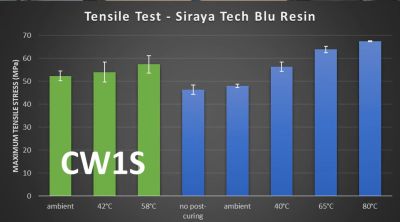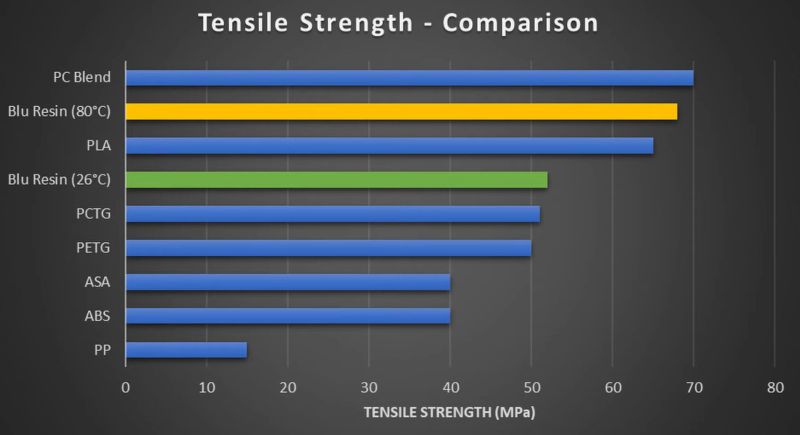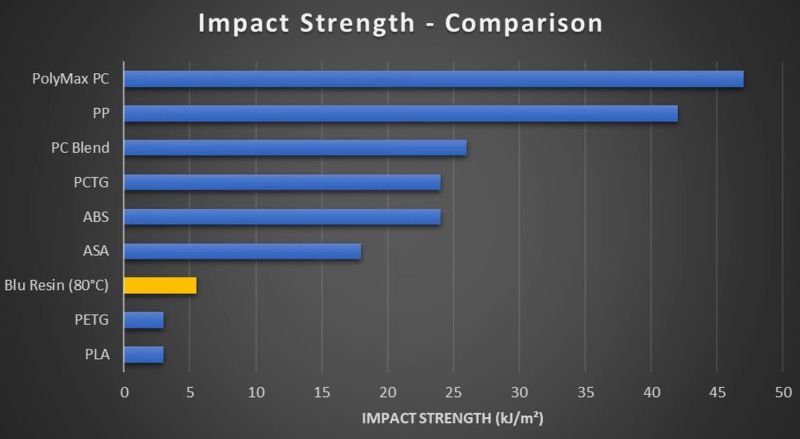
Resin 3D prints have a reputation for being brittle, but [Stefan] over at [CNC Kitchen] would like to dispel this myth with the thing which we all love: colorful bar graphs backed up by scientifically appropriate experiments. As he rightfully points out, the average resin printer user will just cure a print by putting it in the sunshine or in a curing station that rotates the part in front of some UV lights. This theoretically should cause these photosensitive resins to fully cure, but as the referenced Formlabs documentation and their Form Cure station indicate, there’s definitely a thermal element to it as well.
To test the impact of temperature during the UV curing process, the test parts were put into an oven along with the UV lamp. Following this uncured, ambient cured and parts cured at 40 to 80 ºC were exposed to both tensile strength tests as well as impact strength. The best results came from the Siraya Tech Blu resin cured at 80 ºC, with it even giving FDM-printed parts a run for their money, as the following graphs make clear. This shows the value of thermal post-curing, as it anneals the resin prints. This reduces their impact strength somewhat, but massively improves their tensile strength.
An interesting data point is also that not only does thermal post-curing work during the exposure to the UV source, but also afterwards, even if you lose a few points in the tensile strength test. Although these results are just for this one type of resin, it’s possible that heating the resin prints while UV curing may universally benefit resin prints. This would surely make for a fascinating follow-up study.

















It is always so good to see Stefan and his testing gizmos. And how he tries to quantify things,
The comments under the video are interesting, too. Hinting at just how deep UV light penetrates into resin prints, which seems to be only in the 0.1mm range for clear prints.
This would make the UV curing just a trick for making the shell less sticky. Fully curing the part then needs heat and time…
That info is crucial, since i often have to cut, drill and sand my prints. Even though i know the resulting dust is nasty, i thought curing it for 20 mins in the curer made it save to the touch
I also think the resin works like a negative photoresist. Then the penetration depth is severely limited by the absorption / limited to the surface.
I only know the negative resists from semiconductor technology, which require UV light and heat. And even with very thin layers, the stuff is not completely cured to the substrate.
This totally makes sense I’ve always soaked mine in very hot water before final curing and always has less problems with breakage than most of the people I know
As I was reading it got me to thinking about the impact of hot water as I use hot water as part of my clean / support removal and now I wonder if I should use hot water as part of a water cure? *turns on printer
I’ve been thinking about doing something similar, but in 60 to 80 degree water, as the UV light is supposed to be more evenly distributed though water than air.
Love to see this tried out. My idea was to use a smallish fish bowl that would fit my prints nicely and heat quickly.